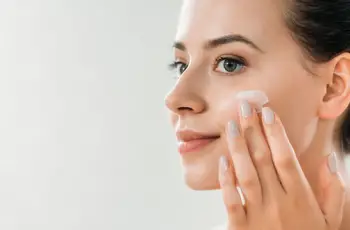
Best Cleanser For Melasma: What to Use and Why It Matters
Melasma is a persistent form of hyperpigmentation that’s notoriously difficult to treat.
The right cleanser can make a huge difference by prepping your skin to better absorb treatment products and by gently promoting exfoliation without irritating your skin.
As a dermatologist practicing in sunny Miami, I see many patients struggling with melasma due to high sun exposure.
Today, I’ll share my expert recommendations on choosing the best cleanser for melasma and how it fits into a comprehensive skin care routine.
Why Choosing the Right Cleanser for Melasma is Important
Melasma involves overproduction of melanin leading to brown or gray-brown patches, usually on the cheeks, forehead, nose, or upper lip. Treatment can be slow, often taking months to improve.
Using an unsuitable cleanser can worsen inflammation, dehydration, and irritation—all of which can trigger or worsen pigmentation.
Dermatologist-recommended cleansers for melasma primarily help by:
Increasing exfoliation gently to remove dead skin cells
Preparing skin to absorb skin lightening ingredients like hydroquinone or retinoids better
Soothing and maintaining the skin barrier to prevent irritation
What Cleansers Don’t Work Well for Melasma
You might be tempted to buy cleansers with skin lightening ingredients, but these usually don’t work because they are rinsed off too quickly to affect melanin production.
The active pigment-fighting ingredients belong in leave-on treatments such as serums and creams — not in rinse-off cleansers.
Hydroxy Acid Cleansers: The Cornerstone for Melasma Morning Cleansing
Most dermatologist regimens start with a low pH cleanser in the morning, often containing hydroxy acids.
Why?
Low pH: Creates an environment less favorable for inflammation and supports product absorption.
Chemical exfoliation: Hydroxy acids gently remove dead skin layers, allowing treatments to penetrate deeper.
However, these low pH cleansers are best used once a day, usually in the morning. Using them twice daily can lead to dryness, irritation, and paradoxically worsen melasma by causing inflammation.
You Need Two Different Cleansers for Melasma: Morning vs. Night
Melasma treatment works best with two different cleansers tailored to your skin type and treatment stage:
Morning cleanser: Usually a low pH, exfoliating hydroxy acid cleanser to prep the skin for daytime treatment.
Evening cleanser: A gentler, more hydrating cleanser that removes makeup, sunscreen, and pollutants without causing irritation.
Starting your melasma routine with two cleansers reduces the risk of over-exfoliation and inflammation, allowing your skin to tolerate active ingredients better.
Morning Cleansers for Melasma: What Works Best by Skin Type
Dry Skin
If you have dry skin, gentle alpha hydroxy acid (AHA) cleansers work well to exfoliate without stripping moisture.
Common AHAs in cleansers for melasma include:
Glycolic acid, Lactic acid, Citric acid, Mandelic acid, Phytic acid
Polyhydroxy acids (PHAs) like gluconolactone
Glycolic Acid Cleansers for Dry Skin and Melasma
Glycolic acid is excellent at smoothing skin texture and boosting radiance by exfoliating dead skin cells.
I often recommend Essopi Glycolic 10% Cleanser for dry skin melasma patients. It’s a gentle but effective alpha hydroxy acid cleanser that prepares skin for brightening serums and retinoids without irritation.
Lactic Acid Cleansers for Sensitive, Dry Skin
Lactic acid is a milder AHA, ideal for dry, sensitive skin that may sting or react to stronger acids.
My favorite is PCA Skin Facial Wash, which contains lactic acid along with soothing ingredients like aloe vera and allantoin to reduce inflammation while gently exfoliating.
Another option is SkinCeuticals Clarifying Exfoliating Cleanser, which combines glycolic, lactic, and salicylic acid.
Despite containing multiple acids, it’s gentle and fragrance-free, making it suitable for daily use in melasma.
Oily and Combination Skin
For oily or combination skin with melasma, beta hydroxy acids (BHAs) such as salicylic acid are excellent choices.
Salicylic acid penetrates pores, removing excess oil and impurities while exfoliating. It also has strong anti-inflammatory effects that help reduce redness and prevent new pigmentation.
Salicylic Acid Cleansers for Melasma and Oily Skin
Our favorite is NoLIO Salicylic Acid Cleanser. It features low pH, green tea antioxidants, zinc to promote healing, and stearic acid to protect the skin barrier.
Another dermatologist favorite is La Roche-Posay Effaclar Medicated Gel Acne Cleanser.
It pairs salicylic acid with lipo-hydroxy acid for a gentle but effective exfoliation, suitable for melasma and acne-prone oily skin.
Evening Cleansers for Melasma: Gentle Yet Effective
At night, your cleanser’s job is to remove:
Makeup, Sunscreen, Pollution, Excess sebum
But it must be gentle enough not to disrupt the skin barrier or cause irritation.
The best evening cleanser depends on your Baumann Skin Type (a classification of skin’s oiliness and barrier strength), which can range from very dry to oily and sensitive.
Dry skin types need creamy, hydrating cleansers that do not strip moisture.
Oily skin types benefit from gentle gel or foam cleansers that remove oil without overdrying.
The Role of Facial Scrubs in Melasma Care
Scrubs can enhance radiance by exfoliating dead skin cells but must be used cautiously in melasma.
Limit scrubs to 2-3 times per week, avoiding use if your skin feels irritated, tender, or stings from retinoid use.
The Pidanti Smoothing Polish Face and Body Scrub is an excellent option. It combines glycolic acid, salicylic acid, green tea extract, and brighteners like arbutin for effective yet gentle exfoliation.
Important Tips for Using Exfoliating Cleansers and Scrubs in Melasma
Use alpha and beta hydroxy acid cleansers gently to avoid inflammation, which worsens pigmentation.
Always wear sunscreen after using exfoliating cleansers or scrubs, as these remove dead skin layers that protect against UV damage.
Choose tinted, non-comedogenic sunscreens containing iron oxides to protect against blue light, which can also worsen melasma.
Sunscreen: The Non-Negotiable Step for Melasma Management
Daily use of broad-spectrum SPF is essential for everyone with melasma, regardless of outdoor exposure.
Sunlight through windows, phone, and computer screens can worsen pigmentation, making indoor sunscreen use critical.
Chemical sunscreens with iron oxides provide excellent protection from visible light and UV rays.
Building the Best Skin Care Routine for Melasma
Choosing the right cleansers is the first step, but they work best as part of a complete skincare routine that includes:
Skin lightening ingredients like hydroquinone, azelaic acid, or tranexamic acid
Retinoids to promote cell turnover
Antioxidants such as Vitamin C serums
Hydrating and barrier-repair moisturizers
Daily sunscreen
Personalized Advice and the Baumann Skin Type Quiz
Melasma treatment is not one-size-fits-all. To get the best results, know your Baumann Skin Type.
Take a personalized skin quiz to discover your skin’s characteristics and get customized recommendations for cleansers and other products tailored specifically for your melasma and skin needs.
Summary: Best Cleanser for Melasma
Use two cleansers: a low pH hydroxy acid cleanser in the morning and a gentle, hydrating cleanser at night.
Dry skin benefits from glycolic and lactic acid cleansers; oily skin responds better to salicylic acid cleansers.
Avoid cleansers with skin lightening ingredients—these belong in serums and creams.
Use facial scrubs sparingly to enhance exfoliation but avoid irritation.
Always wear a tinted, broad-spectrum sunscreen daily to prevent melasma worsening.
Build your routine around your Baumann Skin Type for best results.
Melasma is challenging but manageable with the right approach. Choosing the best cleanser is an important first step toward clearer, more even skin.
If you want, I can help you find your Baumann Skin Type or suggest a complete personalized melasma skincare routine. Just ask!


